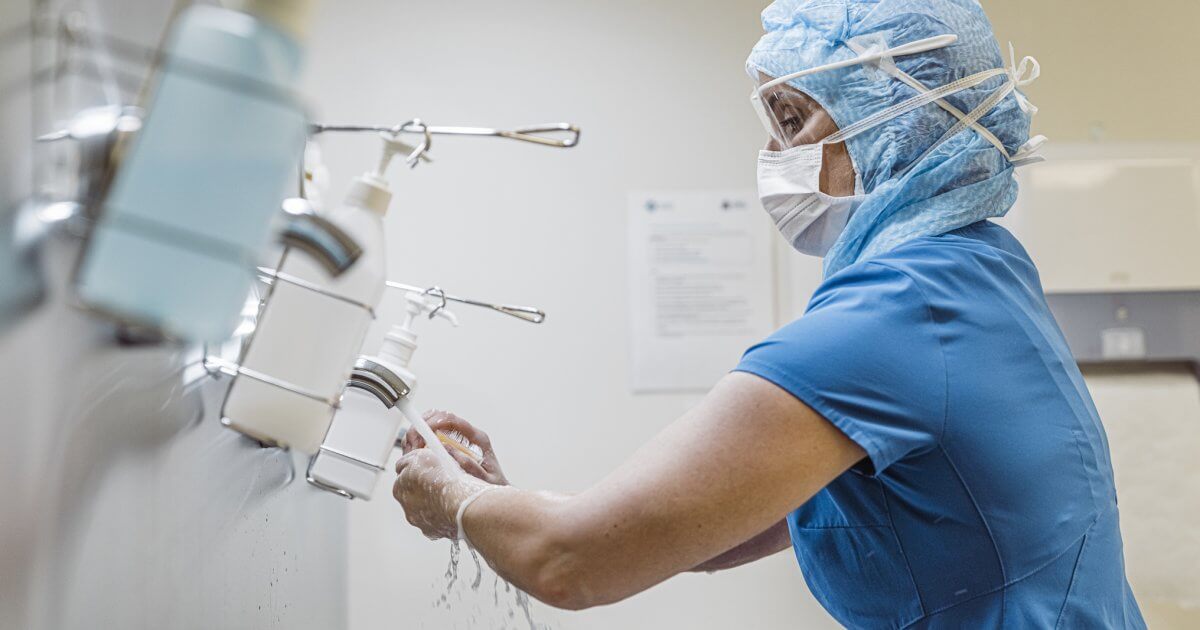Covid Twice, and Now Skin Cancer
- Nurse Tanna Ingraham has worked in intensive care units throughout the course of the pandemic. She contracted coronavirus twice.
- Even after having COVID twice, Ingraham was planning to move to Mississippi to work in another ICU when she learned that she has basal cell carcinoma.
- Five ways to protect yourself from skin cancer are avoiding the sun during peak hours, wearing things that will cover your skin and eyes, wearing sunscreen with SPF 30 or higher, getting an annual skin check, and avoiding tanning beds.
Before Ingraham went to work one day in March 2020, her 11-year-old daughter Madeline placed a green bracelet on her wrist. Madeline told her that she was not allowed to take the bracelet off until she's done fighting COVID. It's been on her wrist every day since.
Read MoreSoon after returning home, Ingraham went in for a routine checkup with her doctor. The visit took an unsettling turn. Within seconds of looking at her, Ingraham's doctor said, "Oh, yeah, we’re doing a biopsy. You definitely have skin cancer.'”
The biopsy results came back the day before Ingraham was scheduled to fly off to another COVID ICU in Mississippi. It was basal cell carcinoma.
Ingraham has no intention of letting her diagnosis hold her back from helping others in a time of need. "There are people who need people like me. I'm a healer. I know how to take care of people," she explained to KHOU 11. "It's what I was built for. It's what I was made to do."
Ingraham is proud to be a nurse, and she sees this new challenge as just a part of her calling to persevere and help people. "That’s what we need to do as nurses. We need to step up and save lives," she said.
What is Basal Cell Carcinoma?
According to the Skin Cancer Foundation, basal cell carcinoma is the most common skin cancer, with 3.6 million cases diagnosed each year in the U.S. Most of these cancers grow slowly, so they are typically curable when identified and treated early.
Basal cells are one of the three primary kinds of cells in surface-layer skin. The most common causes of basal cell carcinoma are over-exposure to ultraviolet radiation from the sun, or from other tanning processes. This kind of exposure can damage DNA, causing abnormal and uncontrolled basal cell growth. Basal cell carcinoma can present as sores, discoloration, bumps, scars or growths.
For most people, there are simple ways to significantly reduce your risk of developing skin cancer.
How to Protect Against Skin Cancer
In a previous interview with SurvivorNet, Dr. Dendy Engelman of Manhattan Dermatology and Cosmetic Surgery outlined five ways that you can decrease your chances of getting skin cancer.
- Avoid sun exposure in the middle of the day Peak hours occur from 10 a.m. to 2 p.m. You don’t need to stay inside completely during these times, but you should make sure you’re wearing coverings and otherwise protected when you are outdoors.
- Protect your skin and eyes Covering your face is essential. Wearing a wide brim hat and sun glasses can shield the top of your head, your ears, and the skin around your eyes.
- Wear sunscreen, SPF of 30 or above Make sure to apply every few hours, or after activities that may wash your sunscreen off. Dr. Engelman also noted that many moisturizers include sun protection.
- Get your skin checked every year You can examine your own skin, but it is still important to be seen at least annually to make sure you do not overlook anything. If you do notice a change in your skin, make sure to contact your doctor immediately.
- Don’t use tanning beds Indoor tanning beds present a significant risk for developing skin cancer. Dr. Engelman would steer people who want that look toward a sunless tanner.
Sue shares her incredible survivor story about how her daughter’s curiosity led to her skin cancer diagnosis.
Learn more about SurvivorNet's rigorous medical review process.


